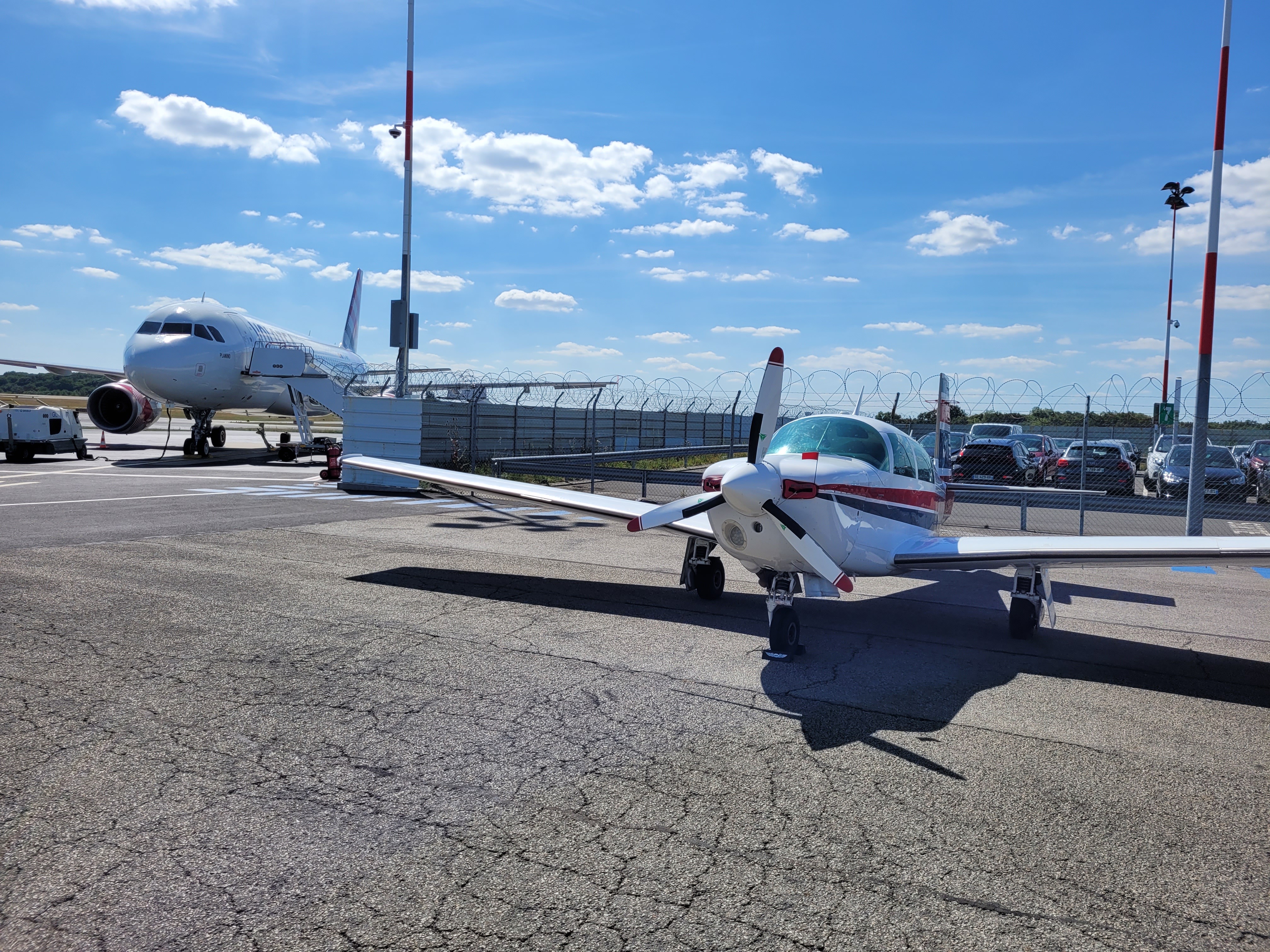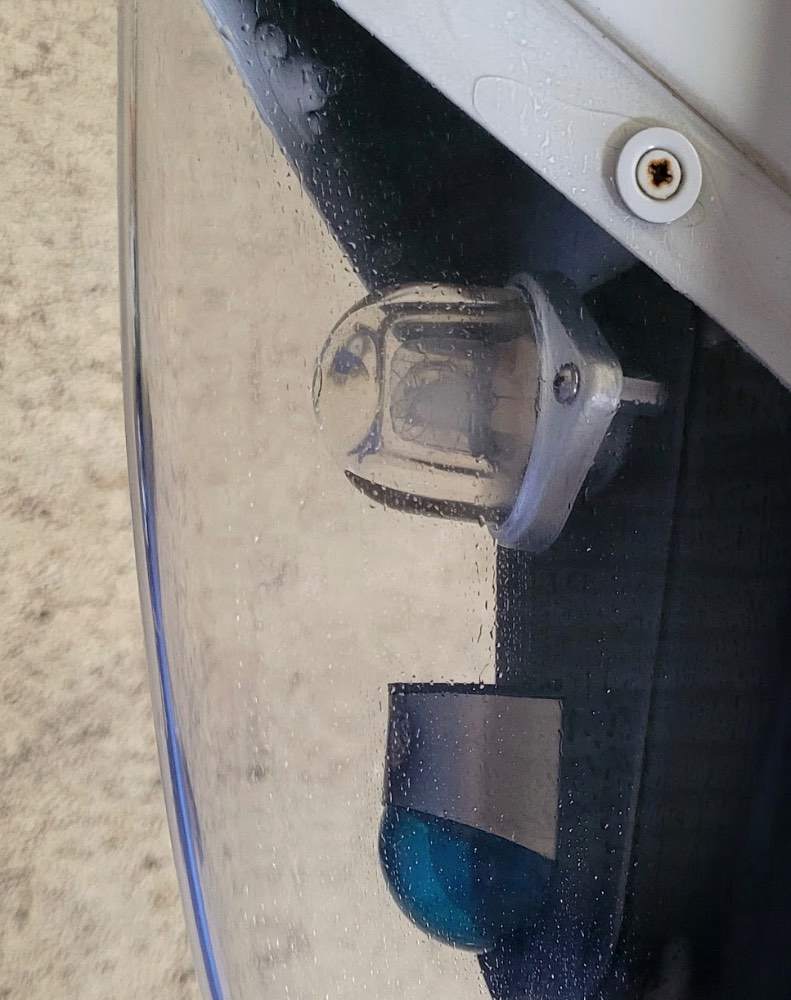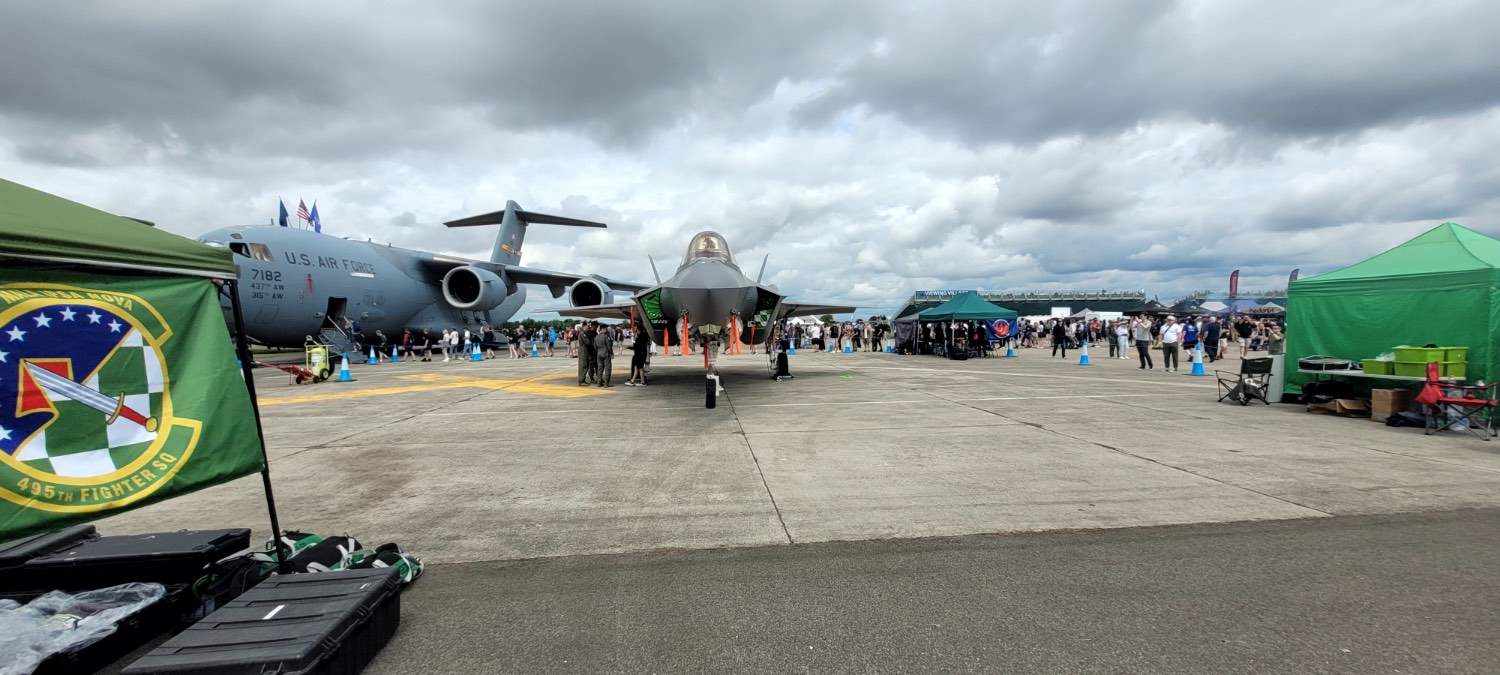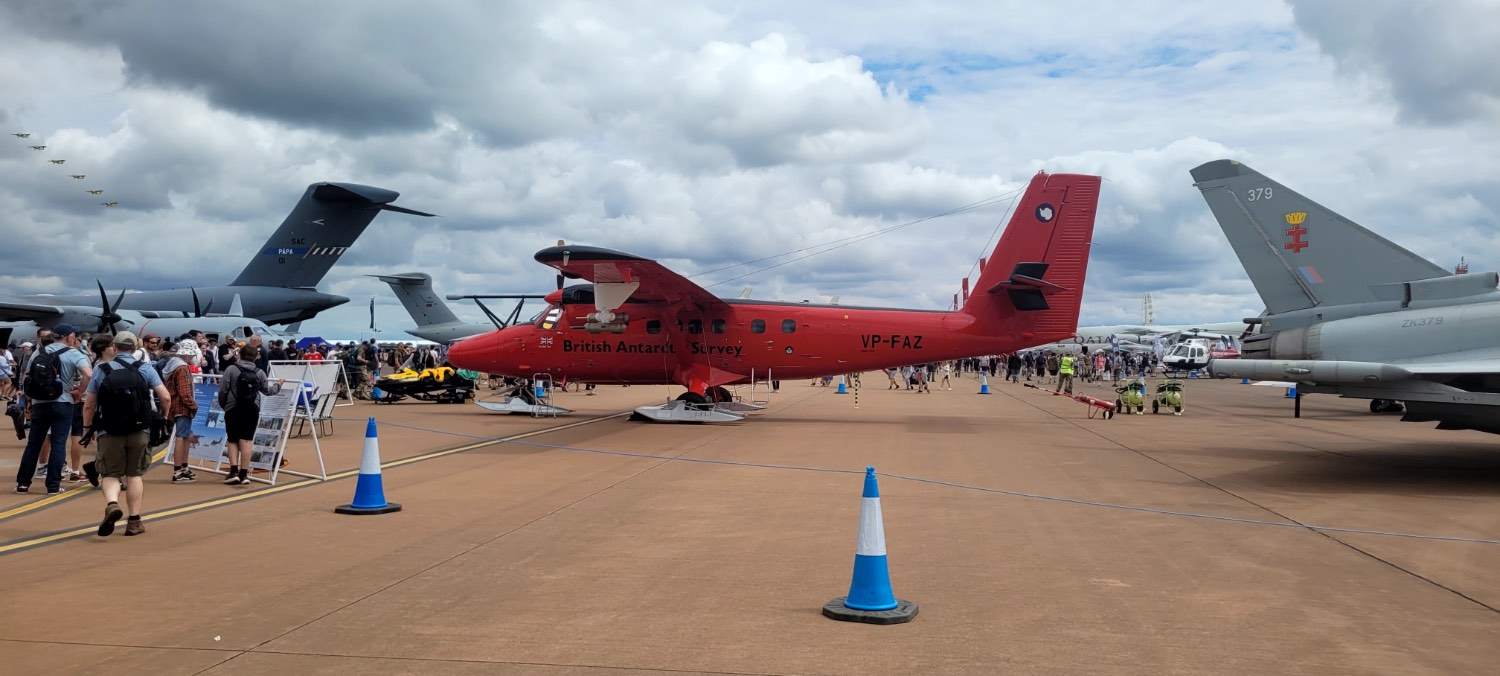-
Posts
1,145 -
Joined
-
Last visited
Content Type
Profiles
Forums
Blogs
Gallery
Downloads
Media Demo
Events
Everything posted by Ibra
-
Two friends of mine from UK got their FAA CPL/IR tickets with Atlas Aviation in Tampa (KTPF) in an accelerated fashion, I did some training and rental from them (not IR tough), I can highly recomand them. My prayers and thoughts are with them during the hurricanes ! It's worth getting FAA written tests done (only in US unless you can get into Ramstein or Lakenheath as USAF or NATO serviceman) anndsome experience ready (this can be done in Europe), it makes life easier once you arrive in US, good luck
-
"I have but I was busy flying aircraft in Bravo", N1NR
-
Likely something unrelated to annuals by owner assisted or trainee mechanic… My guess it’s likely from a high profile AD compliance (e.g. PA28 wing, B737 tail…)
-
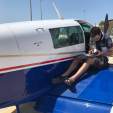
What speeds do you use for gear extension and approach flaps?
Ibra replied to Max Clark's topic in Modern Mooney Discussion
Why one would use T/O with speed higher than 110kts? they are useful for best L/D climb above obstacles on takeoff and slow flight for landing neither require huge speeds I can't see much of their use above 110kts? although, I only fly M20J and energy management is far easier than longer bodies... The only case where I would need extra speed and extra drag is radar vectored ILS, sometimes ATC ask for high speeds to keep healthy sequencing, however, I go clean config (flapless with gear up) and drop everything from 3nm if weather is nice, there is no way to land from 150kts approach without gear (140) and full flap (110) on short finale. If weather is difficult, I make an early request for slow approch at 110kias with T/O flaps (also I sate "unable" if pushed into higher speeds, it's 5min at 140kias instead of 4min at 110kias from 10nm intercepts, even less with tight guidance) I don't think they are designed for partial deployment above 110kts, especially, in gusty or turbulent conditions ! -
Looking for propellers and airframe spares
-
I tested mine on southerly heading, it stopped working “too fast, blabla…” It was a very long 9h flight, very disappointed
-
Without complicating things is this valid for left or right turns? valid in N-S or E-W? assuming flight in northern hemisphere, just making sure we are not missing anything from Coriolis effet and compass turn errors Maybe unrelated, I recall while circling thermals at lower levels in gliders, the upwind part feels strong where downwind part feels weak, I wonder if it’s a similar illusion, say lower part of thermals are “attached to ground reference ”? or it’s a genuine effect, say the lower part of thermal “have an asymmetric shape” in windy days?
-
Good point, I will give it a try (only strobe failed not nav lights) I had the impression it’s this one (Whelen A625 for tail/wing), I will double check next time, many thanks ! https://www.knots2u.net/whelen-a625-wing-tip-tail-strobe-assy-part-01-0770058-03/
-
Does anyone know how to get this strobe light for M20J (1987)? or replacement? What is the model and part number? looks like Whelen?
-
That’s the one I am using in France, it is allowed for use “in motion” without any explicit speed restriction, has anyone seen a speed restriction or warning on this plan (“Roam”) in Mooney or piston flying? I am not interested in 250kts-Mach8 applications, I don’t have the budget
-
Yes 250$/m is steep (x5) unless one flies long legs or have urgent stuff, it’s useless for recreational pilots I think 250kts is what splits the washed and the unwashed in GA flying SpaceX do have a monopoly, however, it seems that competitors are trying to catch it, Iridium now offers an unlimited data plan on 200$ USD for GoExec. At 88kbs it’s nowhere near 100mbs but they have small antenna and zero restrictions… Another interesting I come across while debugging the box, they do allow use of SpaceX signal in position, navigation and timing (PNT). This goes deeper if we have it in our avionics: their Mini works even when NAVSTAR GPS is jammed because it keeps using internal SpaceX Starlink signal for position ! SpaceX viewed the use of Starlink signal for PNT (Position, Navigation, Timing) as "distraction". In reality, they wanted to stay away from this as it's not "their problem" or "today problem", they need to get people to use TikTok and stream cat videos from 40000ft, that's where the money is. For their own consumption, they managed to build proxy position using pure Starlink signal, this was to improve the tracking of the antenna, apparently, something like ~30m is enough to get internet working on anything other than rockets and most of the time they rely on GPS position However, some research labs in Texas and MIT managed to get things down to ~5m with reverse engineering on Starlink signal. This was sponsored by US Militray and it was done without Starlink consent: they got people to work freely on this R&D project using taxpayer money (they can't get more smarter than this), this was used in Ukraine and it’s damn robust to Russian jamming ! I am not upgrading my panel GPS until it’s clear what SpaceX are planning for PNT/GPS and navigation applications along with other NextGen stuff from FAA on multi-constellations or multi-frequencies In the other hand, who wants SkyNet inside their Mooney
-
I have to wait for October to 10th when new T&C kicks in, yes 100mph would be useless in Mooney (even in Cub ) Over panel in front of windshield works better, for Mooney rear window it works as long as it’s facing north with clear view of the sky…
-
I have received an email from Starlink that they are updating T&C for “Mini Roam” to allow its use with no geographical limits (including open water and cross continents), anyone received this? hopefully, they are not reducing speed limit from 240kts to 10kts The new T&C has still same “no maritime & no aviation use”, the usual CYA disclaimer which we disregard: it save them from certification, liability, taxation and legal matters. It’s not like that the users care much, I use my phone when flying even if it’s not allowed in T&C I have not tested Starlink that much but surprisingly the box did work for flights in UK, France, Netherlands…I don’t have fancy mounts, I just ask passengers to hold it on window or panel when in cruise, I will make something to hold it one day With 50mbs all my pilot useful apps seems to work: weather, planning…the Mrs had PC working with quick 10min zoom call while flying, never saw her smiling that much I am heading down to Africa on long flight with a friend, if it works, I am tempted by Netflix if there is not much to see outside
-
A friend of mine reported it works up to 180kts in Piaggio while attached to window, so it should work in Mooney M20J I did testing on car window, it works OK, I will try in Mooney window next time I fly, if you ever hear someone crashed in France while watching Netflix or updating GPS database in the flight, it's me One has to stay with "Mini hardware" and "Roaming" which gives 50Go per month with no speed restrictions, still has geographical limitations (no open ocean or cross continent flying ). Anything else need aviation or maritime subscriptions I heard the subscriptions for Airliners, Bizjets or Cruiseships are north of 4-5 digits? it's nice to see that they are relaxed about it's use in GA pistons (not allowed as per T&C, still they don't care and don't restrict it, after all it's like driving private car and paying 40$/month)
-

Cowl flaps : Landings and go-arounds
Ibra replied to AJ88V's topic in Vintage Mooneys (pre-J models)
At takeoff and landing speeds, nothing. At cruise speeds, I think about 3kts - 4kts on J I leave them open all the time except in cruise or when warming the engine on ground -
You can try but when it bites, and it will, it's 120deg wing drop and 1/4 turn, always scary, reminds me of high performance gliders
-

This guy is an embarrassment to Mooney pilots.
Ibra replied to Brandt's topic in Mooney Safety & Accident Discussion
The pilot looked more like who was once an experienced IFR pilot but not he is not familiar with panel GPS and likely always relied on iPad to make ATC shortcuts, I know similar pilots who have no clue how to use GPS but know how to use VOR, ADF, ILS…I flew with one pilot who asks heading every time he gets a direct, scraps 2 out of 3 GPS procedures due to fat fingers, does not know the fixes in GPS plates and he can’t fly without iPad… This pilot was clearly behind his airplane and currency, yet he was not a zombie doing VFR in IMC: he was operating under IFR, he can keep wings level and he was surprisingly very calm and he took his time with ATC His fuel situation is very interesting nonetheless, I am not sure what his fuel minima? I assume he flies very light in weather I am impressed by US ATC: the patience and the skill to handle this: vectoring instead of GPS direct, offering VOR approach with frequency… -
The aircraft should not have stalled in the first place (twin, t-tail, twin...) it looks like auto-pilot was flying until tail and wings could not generate lift due to severe icing I did read from unconfirmed sources that the weather was the butcher in the area and that this ATR requested level change and that was denied by ATC (also another ATR pilot who went though reported it was the worst icing he saw in his life, one jet reported emergency to change level) In severe icing one has to descend and let ATC know what they are descending: the last worry in those life threatening weather is loss of ATC separation in clouds? Anyway, the aircraft will shortly do that descent with without clearance: lose speed, lose altitude, lose radio, lose autopilot, lose control, lose engine...
-
The older TCDS referred to min octane grades "avgas" without talking about standards It's later TCDS that explicitly refer to Lyco approved fuels (e.g. SI1070), these gave more control to engine manufacturers to stick ASTM or DEF-STAN label on Avgas https://www.lycoming.com/service-instruction-no-1070-AB
-
There are two standards one for low lead Avgas and the other for unleaded Avgas * ASTM D910: Standard Specification for Aviation Gasolines * ASTM D7547: Standard Specification for Unleaded Aviation Gasoline G100UL would fall under D7547 which would require working with engine manufacturers and avgas producers, however, GAMI chose to go down STC route with FAA UL91 from Total and 91/96UL from Hjelmeco are ASTM for unleaded fuel (I don't think it's sold in US), in Europe, they are certified for airframe if engine manufacturers have them on the list (blanket signoff), in US aircraft, I think they need STC like UL94? The UL91 and 91/96UL are not ASTM D7547, however, they fall under something similar DEF-STAN for unleaded Avgas
-
Thanks for the details, Yes, those 400F-430F temps are way higher than what one see running Archer on Mogas or UL91 in “eco mode”, and these fuels have lower octane than UL94 ! It seems they were really banging those O360 engines at UND: peak EGT on WOT at 75% with 430F CHT, the risk of detonation is real AFAIK, PeakEGT at 75% is not allowed with Peterson STC, primarly to keep CHT low when using Mogas (no restriction for UL91) Anyway the moral of this story, keep CHT under 380F, especially if one uses lower octane Most of us on 360 engines don't venture above 400F (except short 5min in hot days climb), irrespective of fuels used: one muddles and fiddles with controls until CHT is back under 380F
-
I still don’t buy low octane argument from UL94 in Archer? Down here we run same aircraft (Archer) and same engines (O360-A) using Total Avgas UL91 with 91 MON and with Peterson STC for Mogas AKI93, SPUL+ or SP98 (SuperPlus) with octane ratings as low as 88 MON If there is something wrong it’s likely with UND fleet and the way how they operate, maintain, measure or lean? If’s hard to understand how this engine (1:8.5) runs ok on SuperPlus from car pumps yet can’t handle Swift UL94, I am more inclined to believe Lycoming assessment, “it’s aromatics” If GAMI has real hard data that O360-A in Archers do need octane min MON100 octane (100LL or G100UL), then Lycoming & FAA will have to review many similar engines in the same bracket: about 40 other engines with 1:8.5CR in 360 series (O360 , IO360, HO360, LVIO360, AEIO360) are approved for UL94, UL91 as well as Mogas: SP, AKI93, EN228… Only Lyco O320 series (1:7CR) are left to use UL94, UL91 and Mogas https://www.lycoming.com/sites/default/files/attachments/SI1070AB%20Specified%20Fuels.pdfOn a side note does anyone know where to find this paper? it seems removed from FAA website Schlickenmaier, H. W., Wilkinson, R., & Atwood, D. (2014). General Aviation Engine Fleet Assessment for Octane Requirement It was far the most balanced paper on octane requirement versus (CR, BMEP) plus sensitivity analysis to bore, strike, temperature, altitude and timing
-
Examiner: this is IFR, you are not supposed to look outside, student: the views are irresistible Good luck with the test !
-
This weekend trip to UK visiting Oxford and then RIAT at RAF Fairford, interesting line up this year with visiting F16s from dozens of allies air forces, the British weather did not cooperate for “proper 3D display”, so they flew “2D figures” Not as exciting as camping between propellers in Oshkosh
-
We have something similar under 800m RVR (or 1200m RVR) to get down to 550m RVR when flying mono-pilot. Funnily, it was never a hard law for private operations only a guidance (ATC still enforce it) ATC: "Cleared for approach, Report going around" PIC: "We are landing...runway vacated" ATC: "How?" PIC: "Using operator visibility credits" I think everyone forgot that they need another clearance to land (as approach clearance is not enough) The guidance says you need coupled auto-pilot and HUD/EVS. In reality, it's Synthetic-Vision and slow speed on short final helps... I think to get extra DH one has to seek operator approvals (I am keen on gunsight, I will STC one of these)

